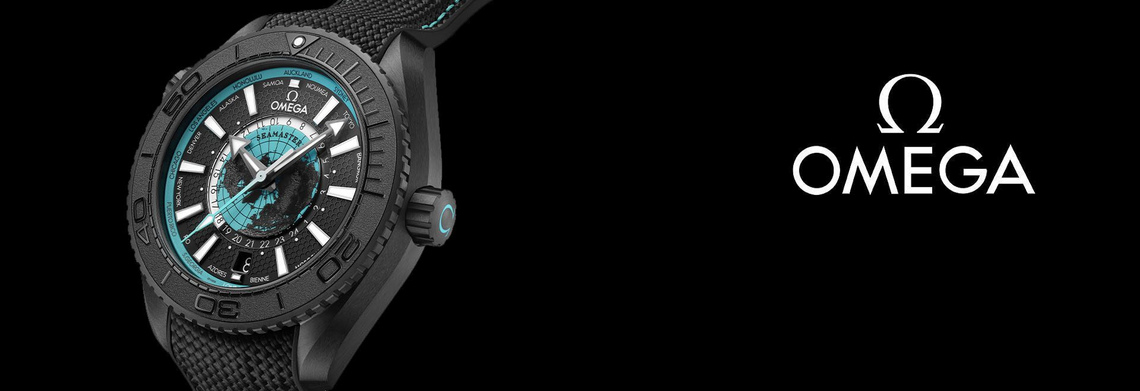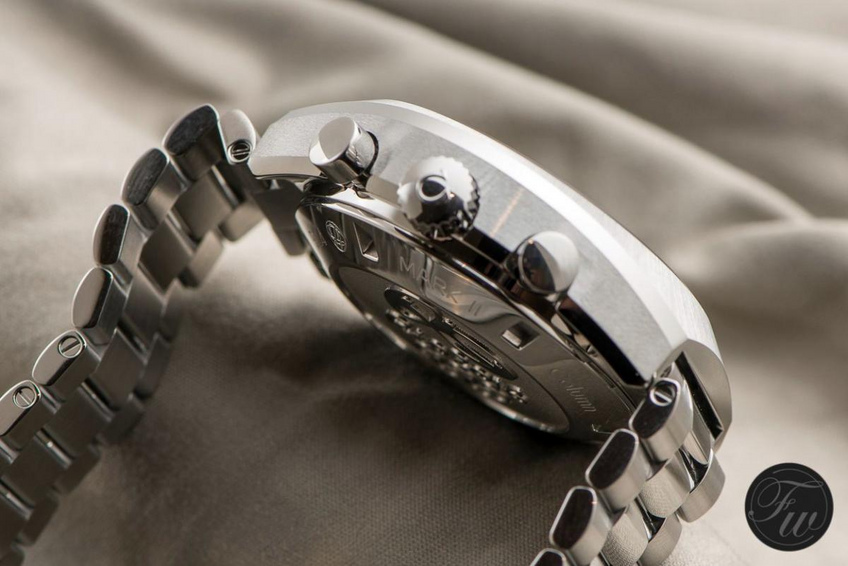

Omega Speedmaster Mark II: back to the seventies
The Speedmaster by Omega, linked to spatial and Moon conquest, is one of the most famous chronographs in contemporary watchmaking history. The Mark II follows the latest fashion trends.
How many watches in this world can be described as an expression of human genius? Being completely honest, very few. I’m sure we’ll all agree the marine clock H1 by John Harrison should be listed first because, as was the case of Omega’s Speedmaster, it enabled mankind to discover new worlds. Esthetes will probably want to list watches that, throughout the centuries, have competed for the title of most complicated watch in the world. They would have a point, but those watches only offered the possibility of pushing known boundaries further. They did not create the opportunity for mankind to access other universes.
In general terms, this instrument is not only just a monolith or an intangible icon. This chronometer, whose history started but not finished in 1957, had the brilliant idea to endure all tests implemented by NASA. On 1 March 1965 it was certified and it became the official chronograph for astronauts. Its fate was thus sealed and it made its entry in the history of mankind by going to space.
Historical context; tough competition
However, all stories have hidden messages. In this case, while the astronauts were getting ready to conquest our satellite the Moon wearing Speedmasters with the 1963 cases, Omega was considering how to reinterpret the case of this chronometer that had become the mechanical incarnation of man’s conquest of the interstellar space. Today, resorting to such measures would almost seem incongruous, but back then the brand was facing tough competition which seemed to have a much trendier approach at the time.

Omega’s Speedmaster had to compete with timepieces such as the Navitimer Caliber 11 by Breitling, the Monaco Caliber 11 chronometer by Heuer, the self-winding chronometer by Seiko, and the Zenith El Primero. The Speedmaster had been nicknamed the “Professional Moonwatch” and it had become space conquerors’ favorite tool. Yet, this piece may have seemed old-fashioned to baby-boomers such as the French who were slowly taking down barricades, and were fighting against segregation and war in South East Asia and looking forward to something completely different.
The Speedmaster Mark II; from Apollo to 2014
Thus, it was the Speedmaster Mark II that travelled to the Moon for the first time in history with Apollo 11’s astronauts. This version of the Speedmaster featured a Caliber 861 Lemania with an interlocking mechanism of the chronometer by shuttle rather than a column wheel (Cal 321). It was thus quite a modern timepiece but not as modern as the version with a self-winding mechanism –the Speedmaster Mark III– which was included in Omega’s catalogue in1971.
This year’s version–The Speedmaster Mark II– houses the self-winding mechanical caliber Omega Co-Axial 3330 with column wheel and Si14 silicon balance-spring. Therefore, the piece resembles the Mark III more than the 1969 Speedmaster Mark II. The new Speedmaster Mark II is a “retro-futurist” piece in the sense that it looks a bit like a timepiece from the past. In other words, while its aesthetics convey the past, its mechanisms have been modified with the aim of meeting the requirements of contemporary collectors who are less likely to appreciate movements that are identical or almost identical to old ones.
A 1970s flair
Whilst Omega usually designs its pieces with collectors in mind, this doesn’t seem to have been the case this time even though collectors represent a substantial percentage of this type of watch’s sales. Indeed, they are able to buy some 2,500 pieces in record time. It wouldn’t be surprising, then, that there are some objections to this motorization from purists.
It would have been commercially interesting to first consider producing a manual-winding version of this timepiece with a similar finish to that of the original version and then present the Speedmaster III version with a self-winding caliber next year. Furthermore, the dial is also inspired in the original but it features a date opening which extremists will probably despise (comes with its own regulating tool).
However, most owners of a Speedmaster will approve of the Super-Luminova®-filled tachymetric scale on the bezel. The hours and minutes hands, painted black and white, along with the sweep seconds hand feature Super-Luminova®. On the whole, we can clearly see the watch’s 1970s influence, which is not bad taking into account that the seventies are still in vogue for now. Given that this is a creation based on another creation, some visual similarity must be preserved. To this end, the Speedmaster Mark II has a satin-brushed steel strap, with an extendable deployment buckle patented by Omega. It also features a rack-clasp which offers the possibility of precision adjustment.
Hybrid and reassuring
The timepiece is a very “in” product and a pure hybrid as it is neither completely inspired by the initial one nor has it diverged from the brand’s history. In this case, the manufacture has made no radical choices and has put its public and sales before the production of a manual winding version. This public does not necessarily share the same buying motivations with those who bought the traditional Speedmaster Professional Moonwatch which were regularly produced in limited editions. This may also be the reason that, apart from being water resistant to 100 meters and equipped with a sapphire crystal, this chronometer has a guarantee of four years from the date of its purchase; therefore providing another way of assuring the new adepts of mechanical horology…
Photos courtesy of Fratellowatches and Deployant









